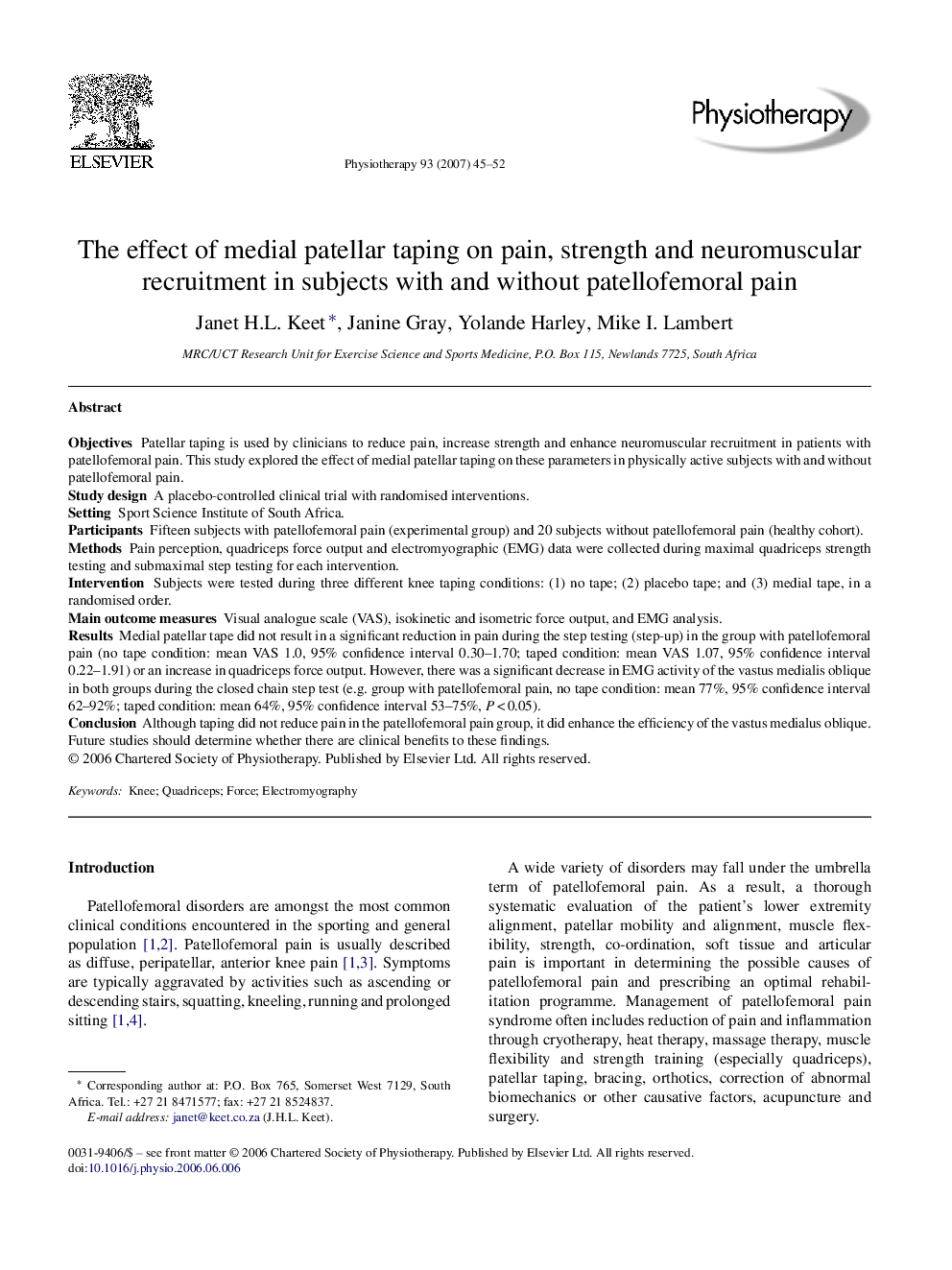| کد مقاله | کد نشریه | سال انتشار | مقاله انگلیسی | نسخه تمام متن |
|---|---|---|---|---|
| 2627522 | 1136082 | 2007 | 8 صفحه PDF | دانلود رایگان |

ObjectivesPatellar taping is used by clinicians to reduce pain, increase strength and enhance neuromuscular recruitment in patients with patellofemoral pain. This study explored the effect of medial patellar taping on these parameters in physically active subjects with and without patellofemoral pain.Study designA placebo-controlled clinical trial with randomised interventions.SettingSport Science Institute of South Africa.ParticipantsFifteen subjects with patellofemoral pain (experimental group) and 20 subjects without patellofemoral pain (healthy cohort).MethodsPain perception, quadriceps force output and electromyographic (EMG) data were collected during maximal quadriceps strength testing and submaximal step testing for each intervention.InterventionSubjects were tested during three different knee taping conditions: (1) no tape; (2) placebo tape; and (3) medial tape, in a randomised order.Main outcome measuresVisual analogue scale (VAS), isokinetic and isometric force output, and EMG analysis.ResultsMedial patellar tape did not result in a significant reduction in pain during the step testing (step-up) in the group with patellofemoral pain (no tape condition: mean VAS 1.0, 95% confidence interval 0.30–1.70; taped condition: mean VAS 1.07, 95% confidence interval 0.22–1.91) or an increase in quadriceps force output. However, there was a significant decrease in EMG activity of the vastus medialis oblique in both groups during the closed chain step test (e.g. group with patellofemoral pain, no tape condition: mean 77%, 95% confidence interval 62–92%; taped condition: mean 64%, 95% confidence interval 53–75%, P < 0.05).ConclusionAlthough taping did not reduce pain in the patellofemoral pain group, it did enhance the efficiency of the vastus medialus oblique. Future studies should determine whether there are clinical benefits to these findings.
Journal: Physiotherapy - Volume 93, Issue 1, March 2007, Pages 45–52